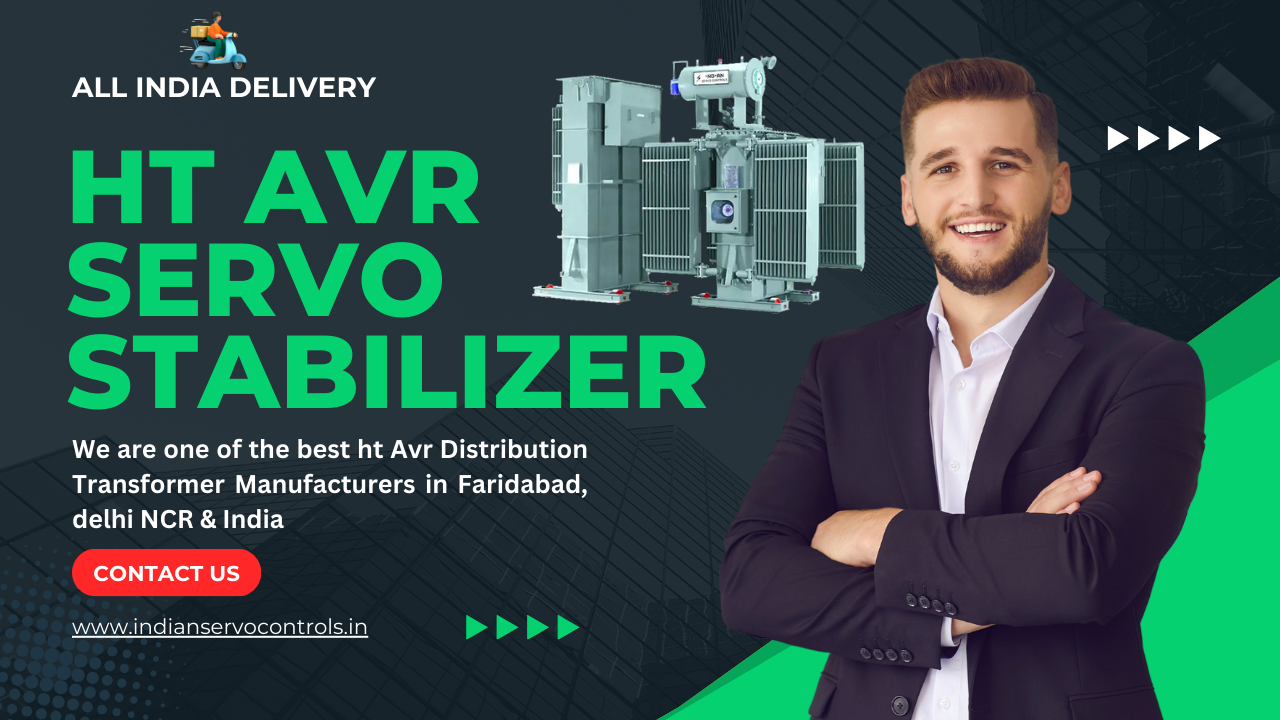What is a HT AVR (High Tension Automatic Voltage Regulator)?

HT AVR (High Tension Automatic Voltage Regulator), also known as a servo stabilizer, is a device used to regulate and stabilize voltage in high tension electrical systems. It continuously monitors incoming voltage and adjusts it to maintain a stable output within a set range. This protects sensitive equipment from damage due to voltage fluctuations, spikes, and surges, ensuring reliable operation and extending equipment lifespan in industrial settings.
Types of HT AVR (High Tension Automatic Voltage Regulator)?
- Electro-Mechanical Servo Stabilizers: These use electromechanical components such as servo motors and transformers to regulate voltage. They are robust and reliable but may have slower response times compared to electronic types.
- Electronic Servo Stabilizers: These utilize electronic components like integrated circuits (ICs) and microcontrollers for voltage regulation. They often offer faster response times and more precise control compared to electro-mechanical stabilizers.
- Static Voltage Regulators: Also known as solid-state stabilizers, these devices use semiconductor technology to regulate voltage. They have no moving parts, making them efficient, quiet, and low maintenance.
- Oil-Cooled Servo Stabilizers: Some HT AVRs use oil as a cooling medium for the transformer, providing better heat dissipation and efficiency, especially in high-power applications.
- Air-Cooled Servo Stabilizers: These stabilizers use air as the cooling medium, making them suitable for applications where oil cooling is not feasible or preferred.
Features of HT AVR (High Tension Automatic Voltage Regulator)?
- Voltage Regulation: Continuously monitors the input voltage and adjusts it to maintain a stable output voltage within a predefined range, protecting equipment from overvoltage or undervoltage conditions.
- Wide Input Voltage Range: Capable of operating over a wide range of input voltages, accommodating fluctuations in the power supply without compromising performance.
- Fast Response Time: Provides rapid voltage correction to minimize downtime and prevent damage to sensitive equipment during voltage transients or fluctuations.
- High Accuracy: Offers precise voltage regulation, ensuring that the output voltage remains within tight tolerances even under varying load conditions.
- Protection Mechanisms: Incorporates protection features such as overload protection, short circuit protection, overvoltage protection, and under voltage protection to safeguard connected equipment from electrical faults and damage.
- Remote Monitoring and Control: Some models may include features for remote monitoring and control, allowing operators to monitor voltage levels and adjust settings remotely for added convenience.
- Efficiency: Designed for high efficiency operation to minimize energy consumption and reduce operating costs over the long term.
- Diagnostic Features: Provides diagnostic capabilities to identify and troubleshoot potential issues quickly, allowing for proactive maintenance and minimizing downtime.
- Compact Design: Offers a compact and space-saving design suitable for installation in a variety of industrial settings.
- Environmental Protection: May feature rugged construction and protection against environmental factors such as dust, moisture, and temperature extremes to ensure reliable performance in harsh conditions.
Difference between Electro-Mechanical Servo Stabilizers and Electronic Servo Stabilizers?
- Operating Principle:
- Electro-Mechanical Servo Stabilizers: These stabilizers operate using electromechanical components such as servo motors, transformers, and relays. They adjust the output voltage by mechanically varying the position of the auto-transformer’s carbon brushes or by switching taps on a transformer winding.
- Electronic Servo Stabilizers: Electronic stabilizers use solid-state electronic components such as integrated circuits (ICs), microcontrollers, and power electronics to regulate voltage. They typically employ pulse-width modulation (PWM) or other electronic control techniques to adjust the output voltage.
- Response Time:
- Electro-Mechanical Servo Stabilizers: Generally, these stabilizers have a slower response time compared to electronic stabilizers due to the mechanical movement involved in adjusting voltage.
- Electronic Servo Stabilizers: Electronic stabilizers offer faster response times because they rely on electronic circuits, allowing for rapid adjustments to voltage fluctuations.
- Accuracy:
- Electro-Mechanical Servo Stabilizers: They may have slightly lower accuracy compared to electronic stabilizers due to mechanical wear and tear over time.
- Electronic Servo Stabilizers: Electronic stabilizers typically offer higher accuracy and precision in voltage regulation, as electronic components can maintain consistent performance over longer periods.
- Efficiency:
- Electro-Mechanical Servo Stabilizers: These stabilizers may have slightly lower efficiency compared to electronic stabilizers, especially at lighter loads, due to energy losses associated with mechanical components.
- Electronic Servo Stabilizers: Electronic stabilizers are generally more efficient, especially at partial loads, as they can optimize power usage through electronic control.
- Maintenance:
- Electro-Mechanical Servo Stabilizers: They may require more maintenance due to the presence of moving parts, such as brushes and mechanical linkages, which can wear out over time and need periodic replacement.
- Electronic Servo Stabilizers: Electronic stabilizers have fewer moving parts, leading to lower maintenance requirements and longer service life.
- Noise and Vibration:
- Electro-Mechanical Servo Stabilizers: They may generate more noise and vibration during operation due to the movement of mechanical components.
- Electronic Servo Stabilizers: Electronic stabilizers tend to be quieter and produce less vibration since they rely on electronic control rather than mechanical movement.
Indian Servo Controls Make a Silicon Power Rectifier Fully Details
| Rating | upto 3MVA |
| Oil Cooled |

